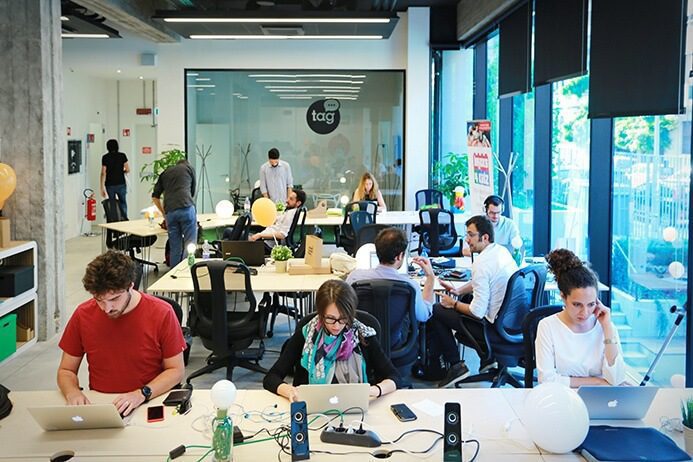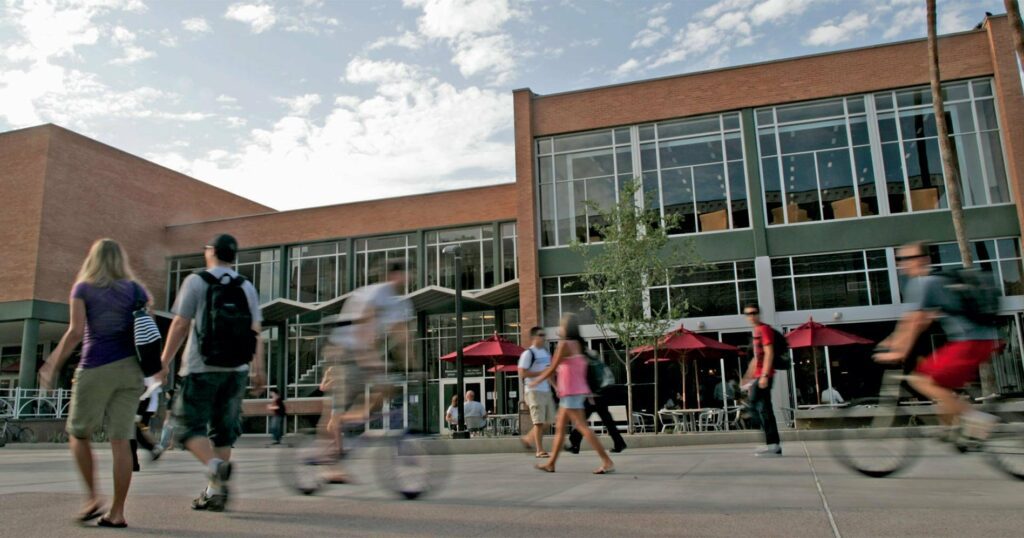This means that a lot of organizations are giving coworking spaces a try and are evaluating their benefits.
In this post, we’ll discuss the pro and cons of coworking, and whether moving part of a remote workforce to a coworking space is a solution your organization should consider instead of a remote office. And because we do know a thing or two about remote access, we’ll also share our thoughts about how to make the most of your remote access software of choice to support whichever option you choose.
Coworking spaces are cheaper than remote offices
Owning and supporting a remote office is expensive, because of real estate costs and operating expenses. Coworking spaces are in general much cheaper, providing affordable desk space and a wide range of membership options to fit a company’s budget.
Coworking memberships tend to be flexible in terms of length of subscription, so you can commit long-term in return for a lower cost-per-desk, or you can commit for shorter periods of time if you are just looking for a temporary solution (for example, if you’re in the process of moving premises).
Generally, coworking spaces offer a range of options to choose from, from a “hot desk” to a small, private office with additional meeting space as an add-on, so you can pay for exactly what you need, for however long you need it. Another coworking perk is that you won’t have to worry about stocking up on stationery, coffee, and basic supplies as you would for a remote office’s workforce, because these are provided for you.
By taking advantage of coworking spaces, companies have reported a 16% annual saving on workspace expenses, a number significant enough to make coworking an option worth considering.
Coworking is scalable…
For startups and remote branches with real prospects of growth, coworking might be the perfect solution to accommodate changing needs.
Managing a team that’s growing in size is a great problem to have, but a problem nonetheless. You may find yourself reorganizing the office on a monthly basis, trying to come up with “creative” ideas to squeeze just one more desk in to fit the newest hire.
A headcount that fluctuates rapidly is also an issue for organizations employing seasonal or temporary staff to help keep up with demand at the busiest times of the year.
Coworking can solve the space issues associated with a fluctuating team size, offering flexible options and design accommodations that can be scaled according to the business’ needs. But only to a point: if the team is growing too fast and you end up requiring too many spaces, costs can become prohibitive.
…But not great for privacy
In return for the flexibility and the affordable rates offered by coworking, you will have to sacrifice a bit of privacy, which may or may not be a big deal for your employees. The concept of coworking is, after all, sharing space with strangers.
This can be particularly tricky for those employees who handle sensitive information and make private business phone calls as part of their role, as you will want to avoid interference from outsiders. While most coworking facilities do have private meeting rooms and phone booths on the premises, there is no guarantee that these will be available at a moment’s notice.
Some people also require a certain degree of privacy and silence in order to focus and perform their duties. Especially when working on a tight deadline, noises and distractions can interfere with the timely completion of tasks and compromise the quality of performance.
Having a permanent office makes easier to tailor the space to employees’ needs, minimize distractions, and provide permanent meeting rooms and private areas to have confidential conversations.
Coworking keeps your employees motivated
Sometimes small offices do not make the most inspiring environments, regardless of how well they have been set up. Remote offices are often perceived as second-class locations, populated by small numbers of employees and lacking the dynamism and the energy typical of thriving corporate headquarters.
This perception and the lack of dynamism can be detrimental to the morale of remote employees, who can feel less motivated and less enthusiastic about their jobs compared to their head office-based peers.
A recent survey conducted by Deskmag shows that coworking in a dynamic environment with like-minded professional solves the motivation problem. In fact, 68% of the interviewees reported an increase in focus, 64% found it easier to meet deadlines, and 71% declared their creativity had improved.
The sense of community seems to be a driver of this increase in productivity, as sharing the space with compatible individuals who are trying to achieve similar goals makes it very easy to exchange opinions, ask for advice, and build positive professional relationships.
Hot desking is not for everyone
Hot desking, the system of not assigning employees personal desks and letting them choose where to sit on a daily basis, allows companies with flexible work schedules to save up to 30% through space sharing.
But, while hot desking is a great way to cut operating expenses, many employees are not fan of the practice. In fact, when Googled “hot desking” as part of our research for this post, we encountered an article titled “Hot desking is the absolute worst” among the top results, which says a lot about people’s perception of this system.
A recent survey conducted by the University of Bedfordshire Business School backs up the sentiment, showing that the instability provided by not having an allocated working space can lead to staff feeling marginalized, distracted, and disconnected from their colleagues.
Additionally, the burden of not knowing where you’re going to sit at the beginning of the working day and the hassle associated to having to set up their workstation can make people feel like they are not in control of their professional routine, contributing to an increase in stress levels.
When choosing your coworking spaces, unless you are planning to go for permanent desks and private offices, you might want to think about the repercussions of hot desking on staff morale, especially if you haven’t used this system before. In this respect, a permanent remote office provides a lot more structure and sense of belonging.
Either way, you need remote access
Whether you have a remote office for decentralized employees, or you decide to opt for a coworking space, you should look into a good remote access solution to support your remote employees.
Maintaining a good level of communication with all your staff members, regardless of where they are located, is extremely important for company culture. If your remote employees feel isolated and detached, the feelings of discontent will negatively impact their performance and your business can suffer as a result.
Remote access software is a great tool to support collaboration with remote employees, as well as freelancers, contractors, and staff on the move. By providing staff with the means to ‘remote in’ from alternative locations, your company can prevent the problems commonly associated with agile working by facilitating communications and fostering a sense of trust between employers and staff.
You will find that remote access is a great tool when it comes to training your employees based in remote offices or coworking spaces without having to travel between locations. With remote access, your instructors can coach remote staff via screen sharing, interacting with the trainees and providing feedback throughout the session.
The practice of coworking presents many benefits and allows organizations to cut office running costs significantly. The system, however, may not be for everyone, as the lack of a private, permanent workspace can have a negative impact on staff morale and impede confidential conversations, and the handling of sensitive data.
Coworking spaces are particularly suited for expanding teams, as they offer scalable, cost-effective accommodation. If the growth rate is too high, however, it may be cheaper and easier to look for bigger, permanent premises.
Providing your decentralized teams with a reputable remote access software is important to prevent the communication issues typically associated with agile working.













